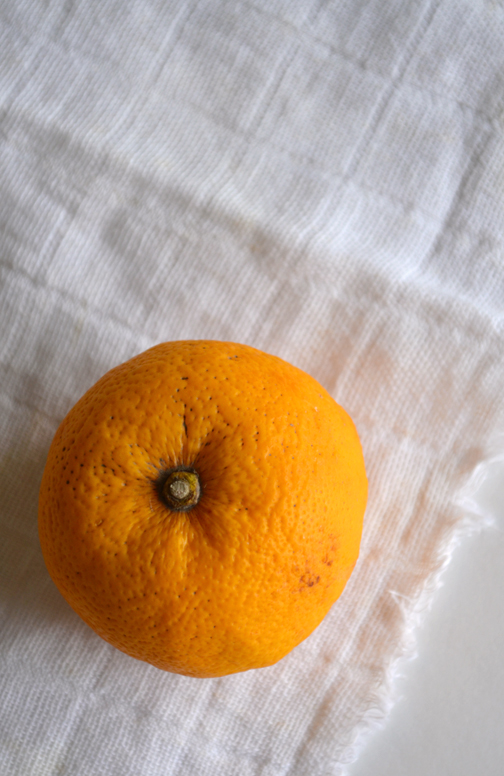I had my first taste of panna cotta in Venice, at the most aggressive restaurant I've ever been to. My friend and I glanced at its storefront a second too long, and all of a sudden a waitress jumps at us out of nowhere, all but dragging us inside for lunch. Before we knew it, we were seated at a table, menus and thin crispy Italian bread sticks in front of us. I don't recall the quality of the food (the waitress seems to have overridden those memories), but the panna cotta was lovely.
The dessert is still associated in my mind with traumatic abductions, but it truly is wonderful and worth trying. It is a rich Italian custard dessert, usually topped with some sort of fruit sauce, and ridiculously easy to put together. If you can make Jello, you can make panna cotta. It's a simple matter of heating some milk and cream, adding some gelatin, and letting it set in the fridge.
It has about the consistency of flan or creme brulee, but without any of the work of tempering eggs, straining, or water bath. Its cool and creamy texture pairs perfectly with a tart fruit sauce. This is a great recipe for beginning bakers, and is sure to impress.
Panna Cotta is seriously under-appreciated.
I flavored my panna cotta with yuzu, a Japanese citrus fruit. They're rather sour and not that great on their own, but wonderful for cooking due to their fragrant aroma and distinctive flavor. They're used for everything from marmalade, savory dishes, sodas, and cakes.
Yuzu can be pretty hard to find in the United States, but it's definitely worth trying to hunt them down (though you could swap in oranges or grapefruit). They are bright and citrus-y, yet with a unique flavor that I really can't compare to any other fruit. I got mine here, from Melissa's, a California-based fruit company that conveniently ships to your door. Normally I'd ask why it's worth getting produce shipped to you when you can just go to the grocery store, but they have a pretty impressive variety of fruits and vegetables, such as these yuzu (yuzus?) which are hard to find locally.
The yuzu sauce I made to go with the panna cotta is tart and delicious, good enough to be eaten on its own with a spoon. It's a slightly more liquid version of marmalade, and if you have extra, it's great spread on toast or stirred into black tea (or simply hot water).
So there you go. Two underrated yet fabulous foods in one.
Enjoy!
-Caroline
The fabulous people at Melissa's provided me with a free sample for this post (thank you, by the way, for patiently responding to my bjillion emails!) All opinions are my own.
Yuzu Panna Cotta
Click here for the printer-friendly recipe.
Yields: 5-6 servings
Adapted from David Lebovitz
Ingredients
For the Panna Cotta
1 cup heavy cream
1 ¼ cup whole milk
zest of 1 medium yuzu
¼ cup sugar
¼ cup cold water
1 packet gelatin (2 ¼ teaspoons)
For the Yuzu Citrus Sauce
2 medium yuzu
1 tangerine
⅓ cup water
⅓ - ½ cup sugar
Directions
Make the panna cotta. Heat the the milk, cream, sugar, and yuzu zest in a saucepan over medium heat, stirring occasionally, until it begins to simmer. Turn off the heat, and let sit for 30 minutes to allow the yuzu zest to steep.
Pour the water in a small bowl. Sprinkle the gelatin on top, and let sit for 10 minutes. Return the milk/cream mixture to the heat, and cook until it simmers again. Add the gelatin and stir until it is dissolved.
Pour the mixture through a fine mesh strainer to remove the yuzu zest. Spoon the panna cotta into 5-6 small greased bowls. Refrigerate overnight, until the panna cotta is set.
Make the yuzu sauce. Juice the yuzu and the tangerine. The yuzu may not yield that much liquid and most of it will be pulp, but do your best.
Slice off the yuzu’s zest, and cut it into thin strips. Be careful not cut off any of the white pith, or else the sauce will be bitter.
Add the juice, pulp, zest, ⅓ cup sugar, and water in a saucepan. Simmer on medium-low heat for 20-30 minutes, until the zest becomes translucent and the sauce thickens slightly. (The yuzu have a lot of pectin, so you don’t need to add any thickeners). Add the remaining sugar if the sauce is too sour. Add another 1-2 tablespoons of water if it becomes too thick. Let cool completely.
Unmold the panna cotta. Dip the bottom of the bowls in hot water for about 15 second, then flip upside down onto a plate. Spoon 2-3 tablespoons of sauce over the panna cotta, and serve!






